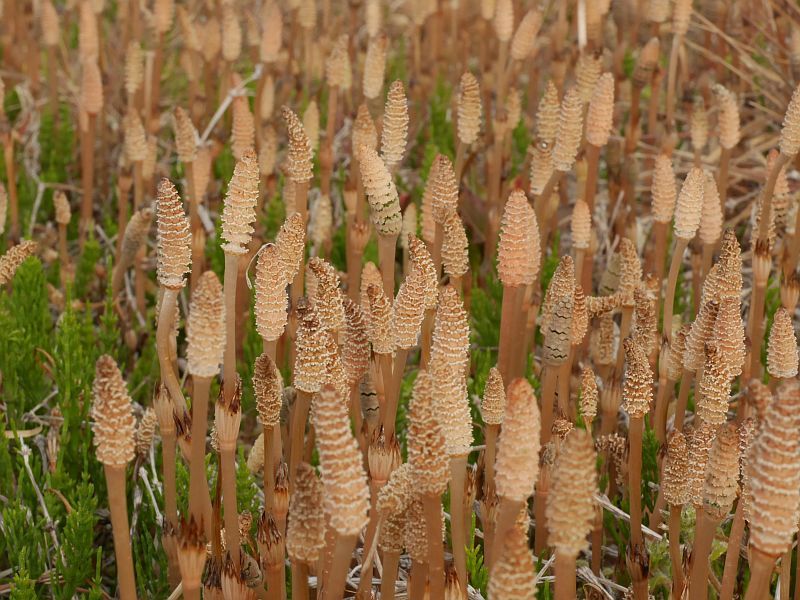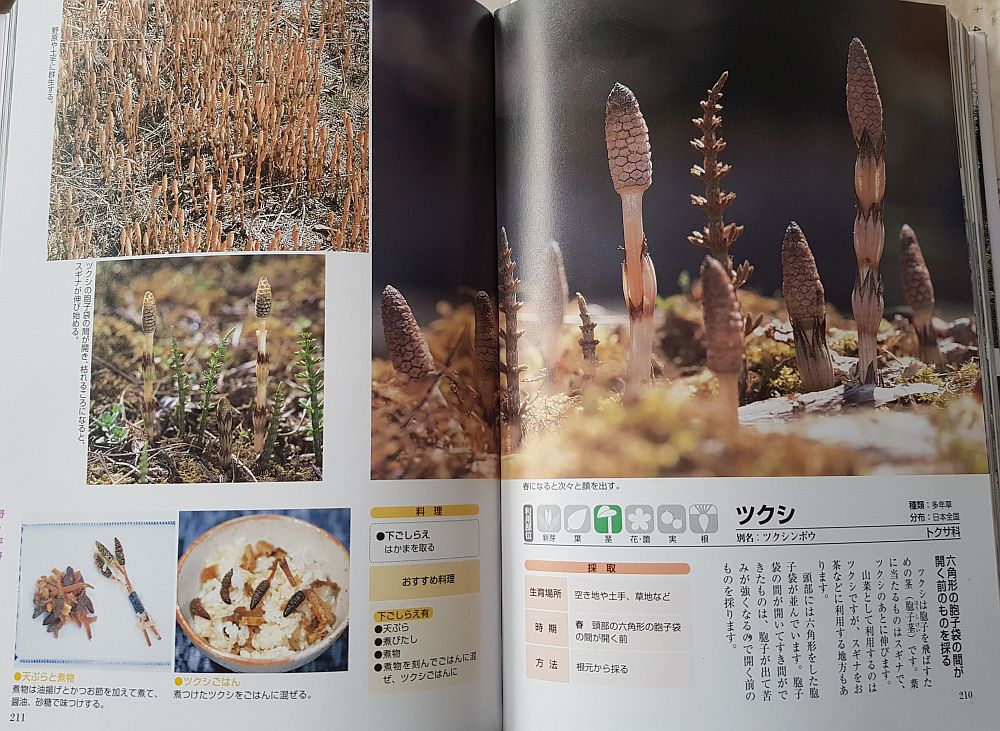Tsukushi (Equisetum arvense) or field horsetail is a much loved spring vegetable in Japan and Korea. In Norway, it is called kjerringrokk or åkersnelle and is only used as a medicinal herb (the green summer stems are used) in particular for urine tract infections and for strengthening hair and nails (see this Norwegian article: http://www.rolv.no/urtemedisin/artikler/equi_arv/art1.htm). It is advised in Norway that one should be careful when picking as it is easily confused with Equisetum palustre (marsh horsetail) which is said to be “quite poisonous”. The two species can occur in similar habitats, as marsh horsetail can also grow in dampish soil, not just marshes. However, the wikipedia entry, https://en.wikipedia.org/wiki/Equisetum_palustre states that this species is poisonous to livestock but NOT humans.
On my study tour to Japan, I remember eating tsukushi 3 times, all as tempura and even found a farm growing it (see the pictures below). The best vegetables for tempura are strong tasting herbs such as tsukushi, green udo, dandelion etc. as the oil coats the tongue reducing the perception of bitterness!
This is a plant I would not recommend planting in a garden as it is one of the hardest plants to remove once you have it and many gardeners fight a never ending war on it!
My Facebook friend Kiku Day in Denmark allowed me to post her own cooking description: “You need to pick the fertile stems that shoot during early spring. You have to take off the whorls of brown scale leaves on these stems. Then you need to cook it. I think traditionally the Japanese cook with soy sauce and miring (sweet cooking sake), eat it with white rice or with fried eggs. However, this time I blanched them and fried them in olive oil with salt and pepper. I have to say that the “heads” of the plant are quite bitter. So you have to like bitter taste. Also, don’t eat the green plant that comes later but use those for tea.”







